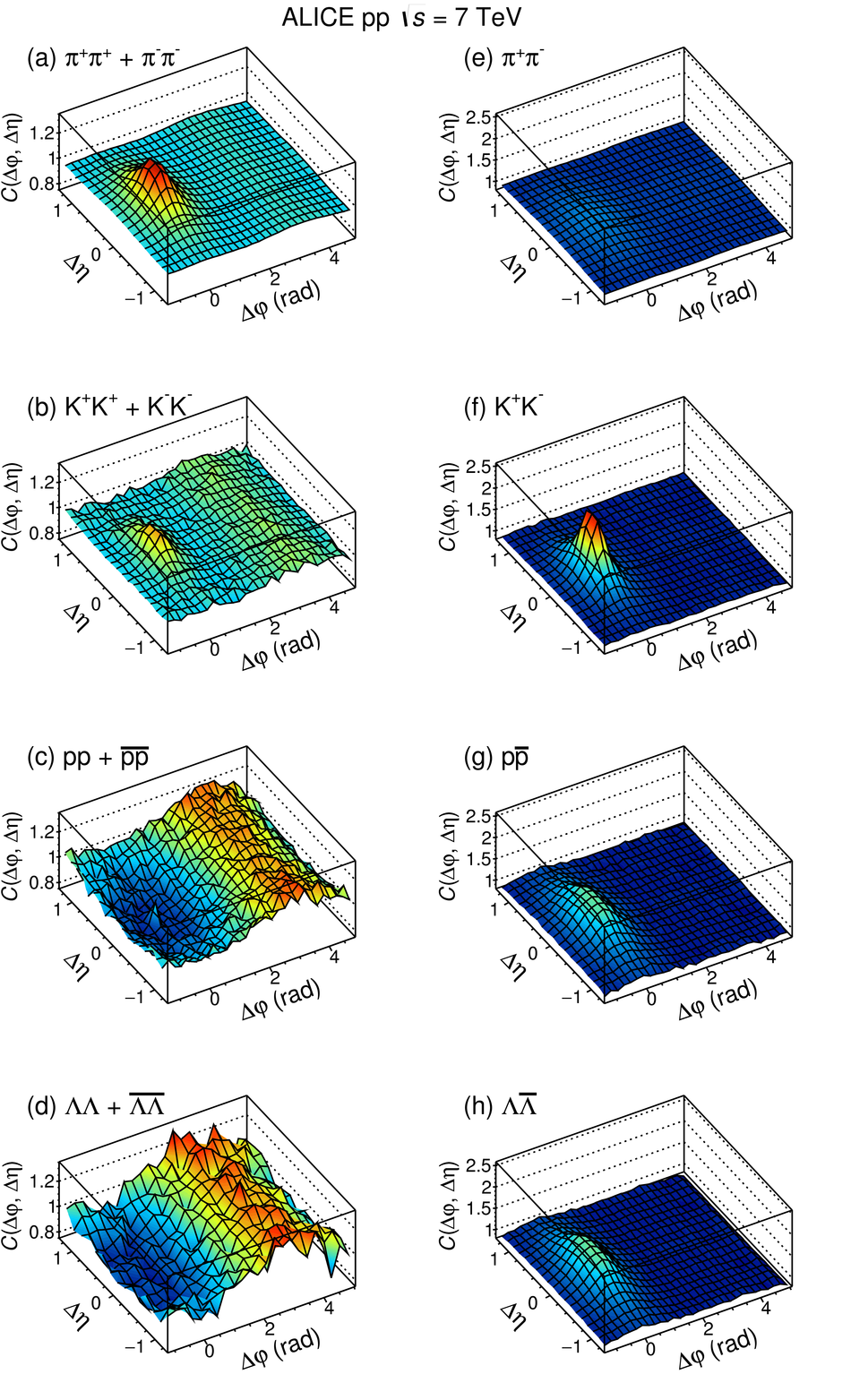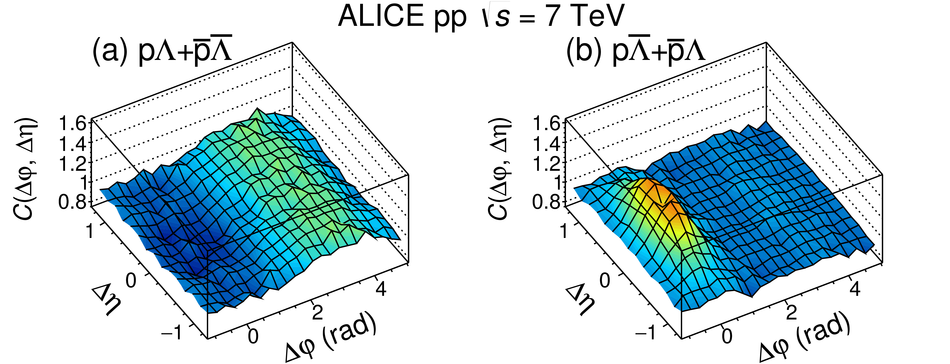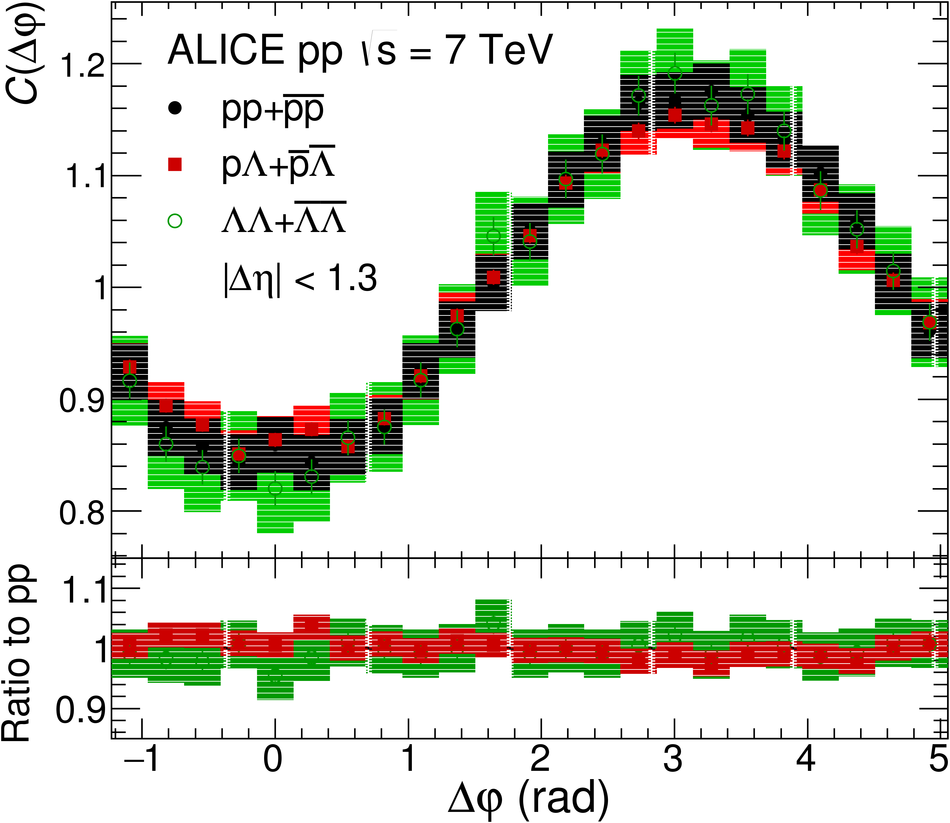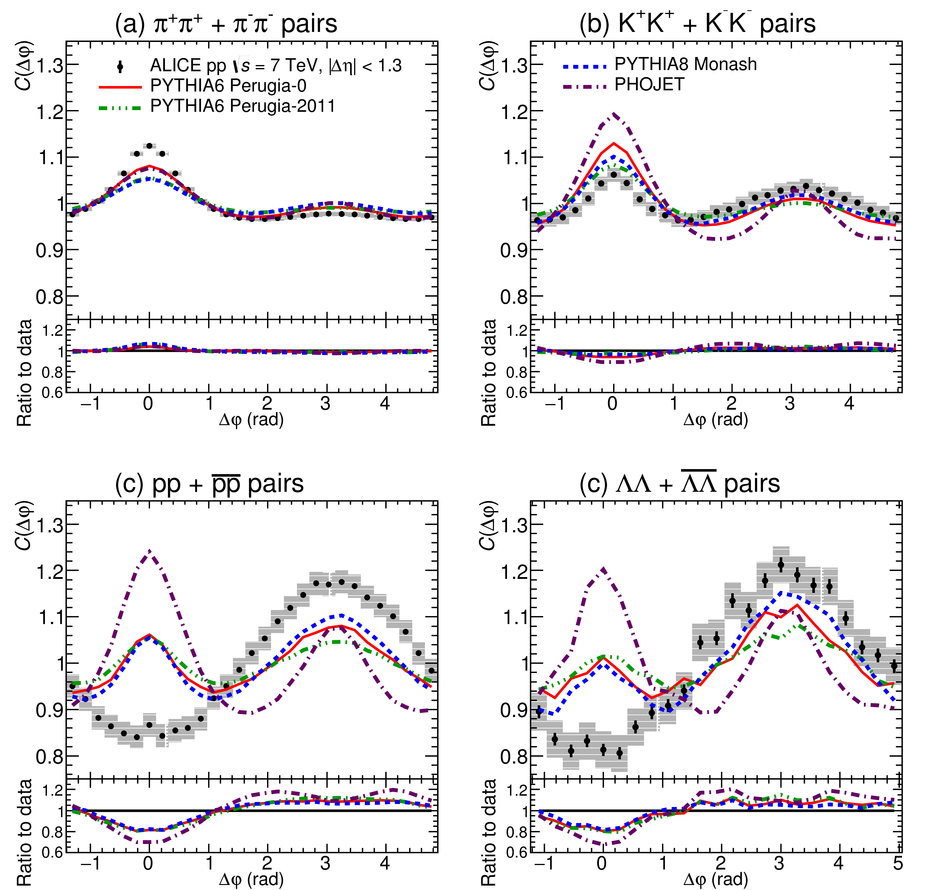Two-particle angular correlations were measured in pp collisions at $\sqrt{s} = 7$ TeV for pions, kaons, protons, and lambdas, for all particle/anti-particle combinations in the pair. Data for mesons exhibit an expected peak dominated by effects associated with mini-jets and are well reproduced by general purpose Monte Carlo generators. However, for baryon-baryon and anti-baryon--anti-baryon pairs, where both particles have the same baryon number, a near-side anti-correlation structure is observed instead of a peak. This effect is interpreted in the context of baryon production mechanisms in the fragmentation process. It currently presents a challenge to Monte Carlo models and its origin remains an open question.
Eur.Phys.J. C77 (2017) 569
HEP Data
e-Print: arXiv:1612.08975 | PDF | inSPIRE
CERN-EP-2016-322








